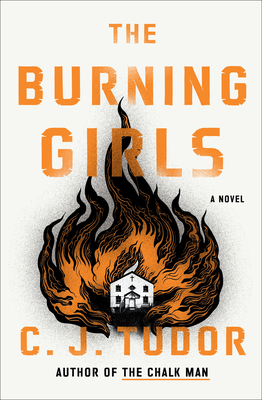
C.J. Tudor’s The Burning Girls is a gripping blend of gothic horror, psychological thriller, and small-town mystery. With her trademark mix of eerie atmosphere and emotional intensity, Tudor pulls readers into a world where faith and fear intertwine, and where the past refuses to stay buried.
The story follows Reverend Jack Brooks, an unconventional female vicar who arrives in the remote English village of Chapel Croft with her teenage daughter, Flo. Seeking a fresh start after a scandal at her previous church, Jack hopes for peace but instead finds a community drenched in tragedy. Five hundred years ago, eight Protestant martyrs, including two young girls, were burned at the stake for their beliefs. Thirty years ago, two local teenage girls vanished without a trace. And just two months ago, the previous vicar took his own life.
When Jack steps into her new parish, she receives a chilling welcome gift: an old exorcism kit and a note quoting scripture. “But there is nothing covered up that will not be revealed and hidden that will not be known.” It is a warning that the secrets of Chapel Croft are not easily buried. Soon, Jack and Flo begin to experience strange visions and encounters, including the spectral appearance of the so-called Burning Girls who seem to haunt the village’s ruins.
Tudor’s storytelling is masterful here. The dual perspective between Jack and Flo adds emotional depth while maintaining tension throughout. Jack is a remarkable protagonist tough, witty, and deeply human. Her skepticism and dry humor make her relatable, while her moral complexity keeps readers guessing about how much of her past she is really running from. Flo, on the other hand, is artistic, sensitive, and struggling to fit in as she faces bullying and danger in a town where cruelty festers just beneath the surface.
The atmosphere of The Burning Girls is as thick as the fog over the English moors. Tudor conjures an environment where every shadow hides a secret, and every villager seems to know more than they admit. The stick dolls made in memory of the martyrs are particularly haunting a local tradition that perfectly encapsulates the village’s eerie reverence for its bloody history.
While the novel contains ghostly elements, it is the human darkness that truly chills. The bullying, prejudice, and hypocrisy within Chapel Croft reflect real-world cruelty far more frightening than any supernatural apparition. As one reviewer observed, the most horrifying part of this book is not the ghosts, but the way people use religion and fear to justify their sins.
Tudor keeps readers guessing until the very end, threading multiple mysteries together with precision. Each revelation feels earned, and when the final twist arrives, it hits with the force of revelation and regret. The pacing is deliberate, building from quiet unease to a pulse-pounding climax that will leave readers breathless.
What makes The Burning Girls so effective is its emotional resonance. Beneath the horror lies a story about redemption, guilt, and the desperate need to protect the ones we love. Jack’s complicated relationship with her daughter and her inner struggle with faith add layers of meaning to the suspense.
In many ways, The Burning Girls feels like a spiritual successor to classic gothic thrillers such as The Woman in Black or Rebecca, but with a modern sensibility and sharper social insight. Tudor does not rely solely on scares; she explores how trauma echoes across generations and how the line between faith and fanaticism can blur into something monstrous.
Final Verdict: 4.5/5 stars
Atmospheric, emotionally charged, and full of unexpected twists, The Burning Girls is one of C.J. Tudor’s most compelling works. It is a haunting reminder that the scariest ghosts are not always the ones from the afterlife but the ones born from guilt, lies, and human cruelty.
👉 Read or purchase The Burning Girls by C.J. Tudor here: https://amzn.to/3VPUanp


